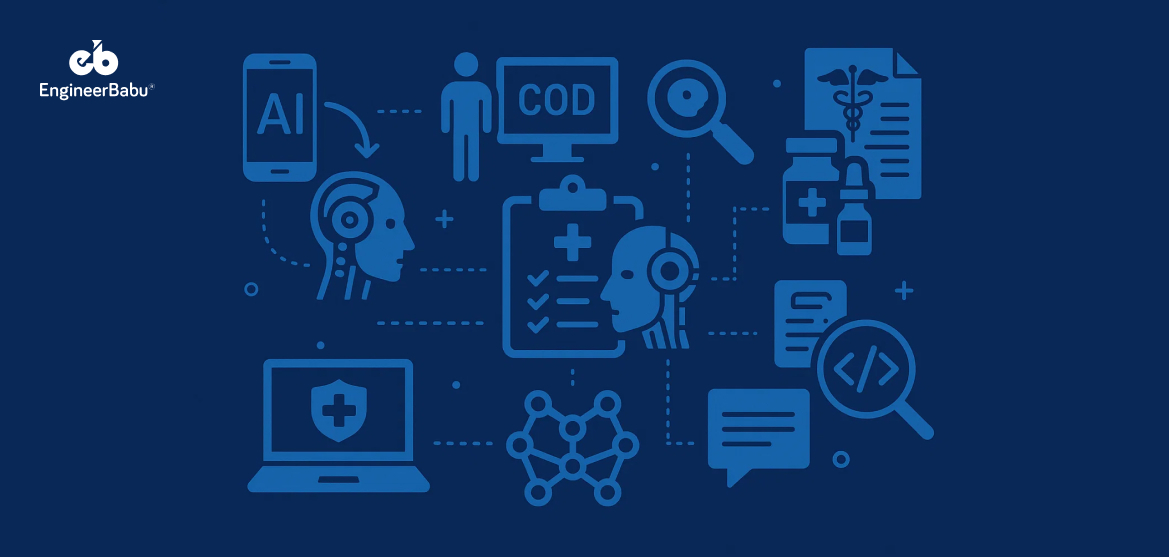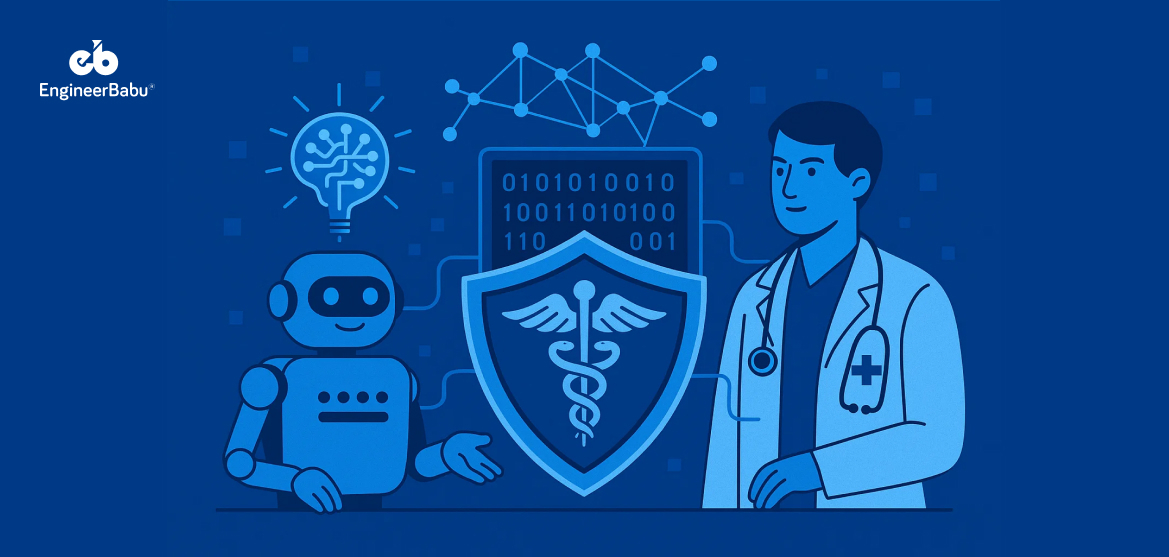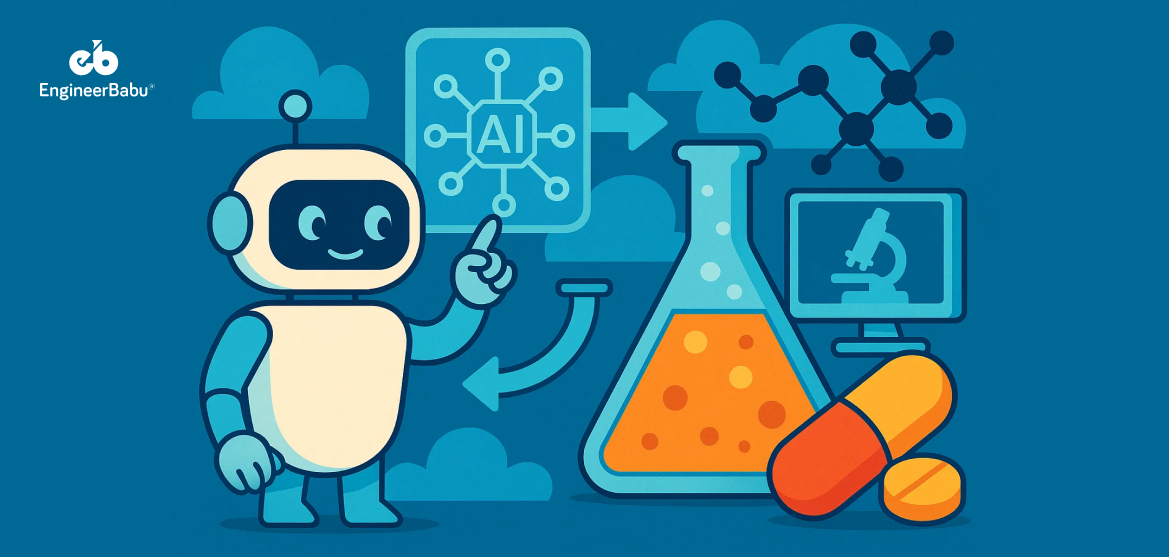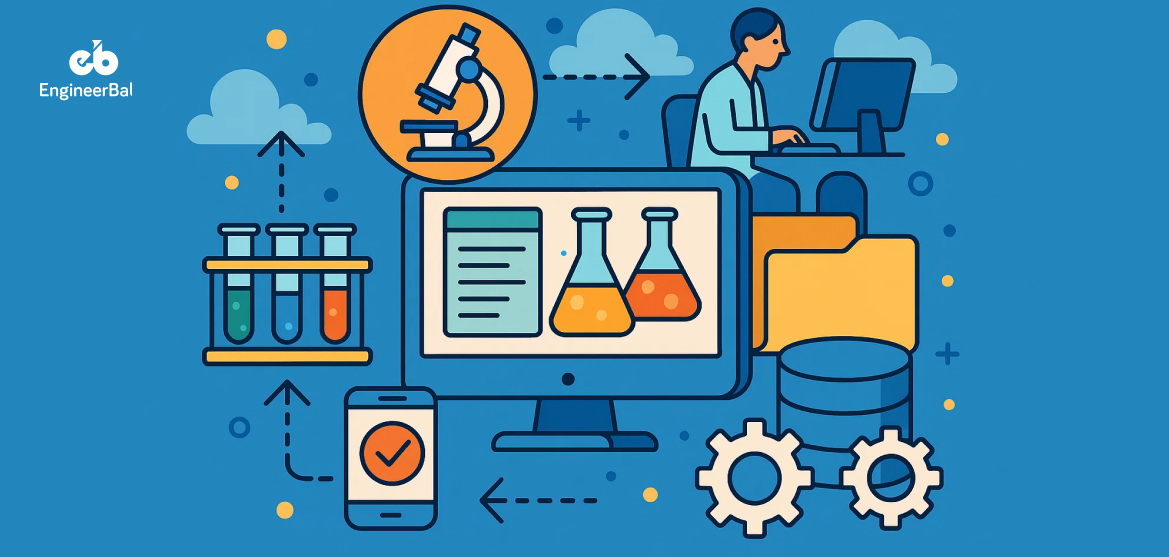Hospitals handle thousands of procedures daily, each requiring precise coding to ensure accurate billing and reimbursement. The complexity and volume of medical data make this task increasingly challenging, leading to potential errors and inefficiencies. AI in medical coding is changing that.
A recent study found that implementing AI in medical coding led to a 40% reduction in billing errors and a significant drop in claim rejection rates.
AI in medical coding assists by automating code suggestions, identifying discrepancies, and streamlining the documentation process. This not only enhances accuracy but also accelerates the billing cycle, ensuring timely reimbursements and improved compliance.
In this blog, we’ll explore seven practical use cases where AI is making a tangible difference in medical coding, offering solutions to common challenges faced by healthcare providers and healthtech enterprises.
What is the role of AI in Medical Coding?
Automated Code Suggestion During Clinical Documentation
AI tools now read clinical notes while physicians are writing them. As the text is entered — whether through typing or voice — the system suggests ICD or CPT codes in real time based on the medical terms and procedures mentioned.
This kind of automation reduces the chances of missing codes or picking the wrong ones. It’s especially helpful when providers use shorthand, non-standard phrasing, or make small documentation errors. The AI fills in the gaps and recommends accurate codes based on context.
One major benefit is speed. What used to take 15–20 minutes of manual coding per encounter can now be done in under 5. That means shorter billing cycles and faster reimbursements. It also gives coders more time to review complex cases instead of chasing down routine ones.
Hospitals using this setup have reported a noticeable drop in coding backlog, and in some systems, up to a 30% increase in coding throughput per day.
Detecting and Correcting Coding Errors
Even skilled coders miss things. AI steps in as a second layer of review. It checks for common mistakes like mismatched diagnoses and procedures, outdated codes, or incomplete entries. Some systems also cross-check notes and lab results to make sure the chosen codes actually match the treatment provided.
This reduces denial rates. Claims go out cleaner the first time, which cuts delays and rework. It also lowers the chances of compliance issues during audits.
One health system using AI-powered error detection saw a 50% drop in coding-related claim denials within six months of deployment.
ICD and CPT Code Matching with EHR Integration
Most EHRs hold patient histories, lab data, prescriptions, and visit notes — but these don’t automatically connect to coding logic. AI bridges that gap.
AI in medical coding scans all of that structured and unstructured data and recommends codes that reflect the full clinical picture. It handles edge cases and multi-diagnosis situations better than template-based systems. This is especially useful for chronic conditions and surgical episodes with multiple steps involved.
It also helps coders catch things that would otherwise go unbilled or misclassified.
Also Read: Use Cases of AI in the Pharmaceutical Industry
Auditing and Compliance Checks
Regulations around medical coding are strict and getting stricter. Every code used must be justified in the documentation and supported by a history of accurate reporting.
AI helps by flagging non-compliant codes, identifying missing documentation, and tracking coding patterns that might raise red flags during an audit. It also keeps a running log of what was coded, when, and why — creating a clean audit trail.
Hospitals using AI-driven compliance checks reduce their external audit failure rate and avoid penalties tied to upcoding or unintentional errors.
Identifying Upcoding or Under-coding Risks
AI can detect patterns of code inflation or missed charges across providers or departments. It compares coding activity against known benchmarks, payer rules, and historical data to catch when something looks off.
For example, if a simple outpatient visit is repeatedly coded as a complex one, AI flags it. If a procedure is performed but never coded, it gets noticed too.
This protects the hospital from accusations of fraud while also preventing lost revenue from missed charges. It also helps train coders and clinicians on where their documentation habits need adjustment.
Real-time Feedback for Coders and Clinicians
Many systems now give immediate feedback during documentation or coding. If a physician enters vague or incomplete notes, AI will prompt for more detail. If a coder selects an outdated code, it’ll suggest the current one.
This shortens training time for new staff and keeps seasoned staff up-to-date without needing constant manual reviews. It also helps reduce back-and-forth between coding and clinical teams, which often causes billing delays.
Over time, this builds better habits and cleaner documentation.
Supporting Multilingual and Global Coding Systems
For hospitals dealing with diverse populations or working across borders, language barriers can complicate coding. AI tools trained on multilingual datasets can translate clinical notes in real time and apply coding logic in the right language.
This makes international claims handling smoother and reduces the risk of translation-related mistakes. It also helps facilities in non-English-speaking regions align with global billing standards, especially if they bill international insurers or refer patients across borders.
Conclusion
Medical coding has always been a mix of precision, speed, and constant rule changes. What used to be a slow, manual process is now becoming faster and smarter — thanks to AI in medical coding.
The use cases covered here aren’t future ideas. They’re already in use across hospitals, healthtech platforms, and billing systems. AI is handling routine suggestions, catching costly errors, flagging compliance risks, and giving coders the support they actually need.
Whether you’re leading a hospital’s revenue team or building software for one, these seven use cases are a clear signal: AI in medical coding is already solving the problems teams face every day. And it’s only getting better.
FAQs
Does AI replace human medical coders?
No. AI supports coders by handling routine tasks, suggesting codes, and catching errors. Human coders still review, validate, and handle complex cases.
How accurate is AI in medical coding?
Accuracy depends on the system and how well it’s trained, but many AI coding tools report 85–95% accuracy on standard coding tasks, with human validation improving results further.
Is AI in medical coding safe for compliance?
Yes. In fact, many systems are built with compliance in mind. They help flag missing documentation, outdated codes, and inconsistencies that could cause audit issues.
How much does it cost to implement AI in medical coding?
Costs vary based on the vendor, hospital size, and integration needs. Some SaaS platforms charge per document or per encounter. ROI usually comes from fewer denied claims, faster billing, and lower labor costs.
Can AI handle multi-specialty coding?
Yes. AI tools can be trained across specialties like cardiology, orthopedics, and oncology. They can adjust based on specialty-specific terminology and coding rules.




